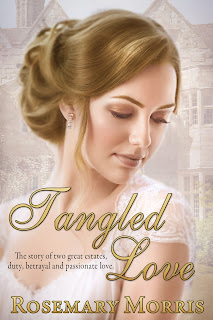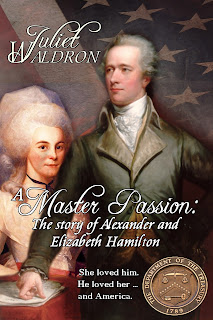Tangled Love by
Rosemary Morris is set in England in 1706, during Queen Anne Stuart’s reign. It
is the story of a daughter’s sacred oath to her father, a Jacobite, two great
estates, duty, betrayal and passionate love.
https://www.amazon.co.uk/Tangled - Love -
ebook/dp/B01LZRP7AE
https://www.amazon.com/Tangled - Love
- ebook/dp/B01LZRP7AE
Many
people daydream about what they would like to accomplish. I am fortunate
because my dream of becoming a published historical novelist has come true.
Looking
back, it seems that since childhood I prepared to share my tales of times past.
Maybe, while I was in my cot, a good fairy blessed me with a vivid imagination.
If so, it was too lively for my parents, who couldn’t relate to it. They wanted
a child with her feet firmly planted on the ground. Instead, my head was either
filled with history, make-believe people or I was reading.
So
many obstacles intervened between my dream and reality. I have three very
painful memories connected to writing and reading. The first, is my mother’s
refusal to give me some paper to write a story on when I was ten years old. The
second is of borrowing a book every day from the library, and the librarian’s
doubt that I read all of them. The third is of an English teacher at Wallington
County Grammar School for Girls. The first clash came when she asked the class
what we had been reading.
“Tess of the d’Urbervilles by Thomas Hardy,” I
answered when it was my turn, as though it was the most natural choice for a
twelve-year-old.
“Don’t
tell lies,” was her ice-cold response.
That
stung because I was a very truthful child. If she had questioned me, I would
have admitted that I didn’t understand all the ins and outs of the story, and
explained that I enjoyed Hardy’s prose.
Clash
number two concerned my composition about a nightmare in which I tried to
capture imaginary terror. She unjustly accused me either of writing about a
real nightmare or of plagiarism, a word I was unfamiliar with.
So
much for lack of encouragement from my mother and teacher. However, despite
many subsequent set-backs, I never lost my love of history, reading and making
up stories. Eventually, I wrote a historical romance that a major publisher
accepted. Unfortunately, the publishing house was sold and the new editor did
not like my novel. Apart from that, I didn’t know the date of publication
should have been stipulated in the contract so my novel remained unpublished.
My
road to publication was very difficult. I lived in Kenya for twenty years
where, although I had the privilege of visiting national parks and enjoying
holidays at the coast, swimming in the warm Indian ocean, the country did not
inspire me to write fiction. Old England remained my muse, but without adequate
research facilities my muse deserted me.
We
left East Africa, and after four years in France, we settled in South East
England.
When
our children left home, my late husband encouraged me to write. I completed the
Open College of the Art’s writing course, read books on how to write, went on a
Writer’s Holiday, joined The Romantic Novelists’ Association, The Historical
Novel Society and a local writer’s group.
My
historical romance, Tangled Hearts (subsequently published as Tangled Love) was
accepted by Enspiren Press, which soon went out of business. Dismayed but not
daunted, I accepted an invitation from MuseItUpPublishing to produce my novels as,
with one exception, e-books. I am grateful to the publisher and editor from
whom I learned so much. Now delighted to be one of Books We Love’s clients.
The
long struggle to become a multi-published historical romance author has been
worthwhile and is an example of the cliché, ‘if at first you don’t succeed try,
and try and try again. Indeed, I am fortunate to have achieved my dream.
Early 18th
century novels by Rosemary Morris
Tangled Love
Far Beyond Rubies
The Captain and The
Countess
Regency novels
False Pretences
Sunday’s Child Heroines born on different days of the week.
Book 1.
Monday’s Child Heroines born on different days of the week.
Book 2
Tuesday’s Child Heroines born on different days of the
week Book 3





















.jpg)


.jpg)



